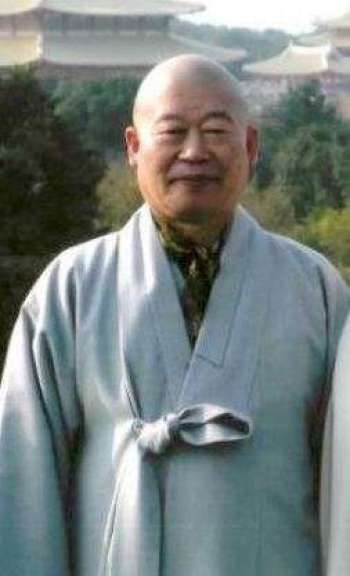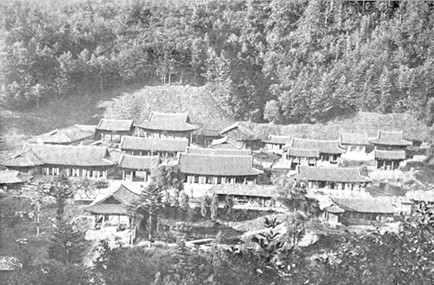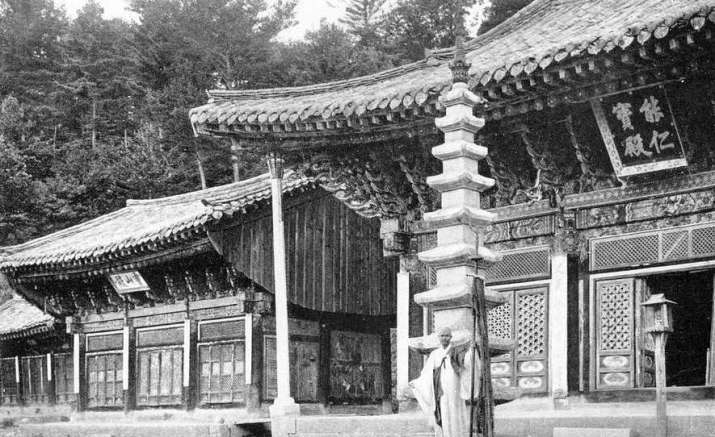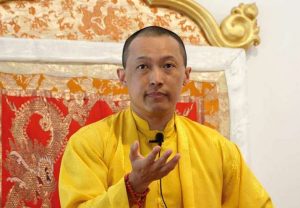A Buddhist monk from South Korea traveled north to Pyongyang on Saturday to help strengthen ties between North and South Korea and to conduct talks on the restoration of an ancient Buddhist temple on North Korea’s Mount Kumgang. The visit marks the first time that the government of South Korean president Moon Jae-in has permitted a South Korean to engage in a civilian-to-civilian exchange with the reclusive North.
Venerable Cheondam, head of the World Peace Foundation, a Seoul-based civic group, will remain in Pyongyang until Wednesday, according to South Korea’s Unification Ministry, which noted that the monastic is traveling unaccompanied.
“The visit is for the purpose of a religious exchange, and the ministry approved it as a means to boost other exchanges,” said an official from the Unification Ministry, which oversees inter-Korean ties. (The Korea Times)
The Korea Times reported that private exchanges between the two countries are expected to increase following Ven. Cheondam’s visit.

According to media reports, Ven. Cheondam will meet with Buddhist officials in Pyongyang, including Kang Su-rin, chairman of North Korea’s Central Committee of the Buddhist Federation of Korea, to discuss a restoration plan for Yujeom-sa, a Buddhist temple destroyed during the 1950–53 Korean War.
Founded in the sixth century, during the flourishing of the Buddhist Silla kingdom (57 BCE–935 CE), Yujeom-sa underwent major expansion in 1168 and again in the 15th century, becoming a major Buddhist pilgrimage destination. It garnered a reputation as one of the Four Great Temples of Mount Kumgang, along with Changan-sa, Pyohun-sa, and Singye-sa. As the largest and oldest of the four—at its height it comprised more than 40 buildings—it underwent further expansion from 1883–85. During the Korean War, the temple was bombed by US forces, who believed it was being used as a military base.
In a report published in 2015, the Korea Institute for National Unification, affiliated with the South Korean government, stated that there are 60 Buddhist temples in North Korea.

During the historic inter-Korean summit at Panmunjom on 27 April, President Moon and North Korean leader Kim Jong-un adopted the joint Panmunjom Declaration for Peace, Prosperity and Unification of the Korean Peninsula, in which both leaders affirmed their commitment to denuclearization and expressed a wish to bring a formal end to long-running hostilities. Since the signing of the Korean Armistice Agreement in Panmunjom on 27 July 1953, the two Koreas have officially remained at war, but the two leaders have agreed to convert the armistice agreement into a full peace treaty later this year.
The landmark summit is expected to be followed by a meeting between US President Donald Trump and Kim Jong-un. Although originally scheduled for 12 June in Singapore, there has been recent uncertainty about when the meeting will actually take place.
A majority of South Korean’s population—56.1 per cent—holds no religious affiliation, according to data from the 2015 national census. Christians make up the largest religious segment of the population at 27.6 per cent, while Buddhists account for 15.5 per cent. While official statistics for North Korea are unknown, the Washington, DC-based Pew Research Center estimates that 71 per cent of North Koreans have no religious affiliation, with “other” religions accounting for 12.9 per cent, folk religions 12.3 percent, Christianity 2 per cent, and Buddhists 1.5 per cent.

See more
S. Korea approves Buddhist monk’s visit to N. Korea (Korea Herald)
Seoul allows monk to take trip to North to boost ties (Korea JoongAng Daily)
South Korean monk to visit North Korea in first civilian exchange (The Korea Times)
S.Korea approves Buddhist monk’s visit to DPRK for civilian exchange (XinhuaNet)
Gov’t Approves N. Korea Visit by Buddhist Monk (KBS World radio)














